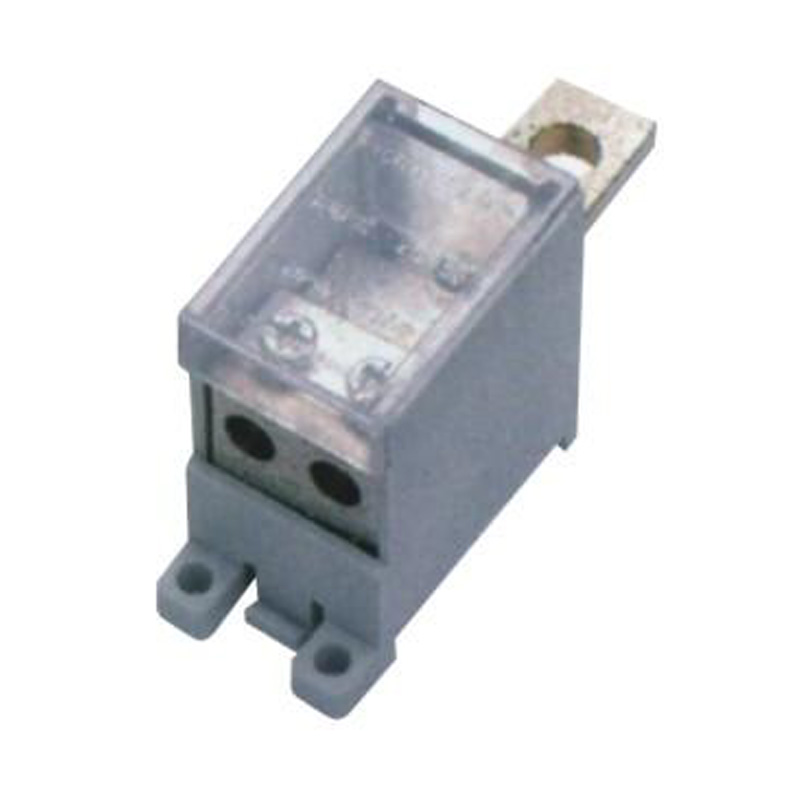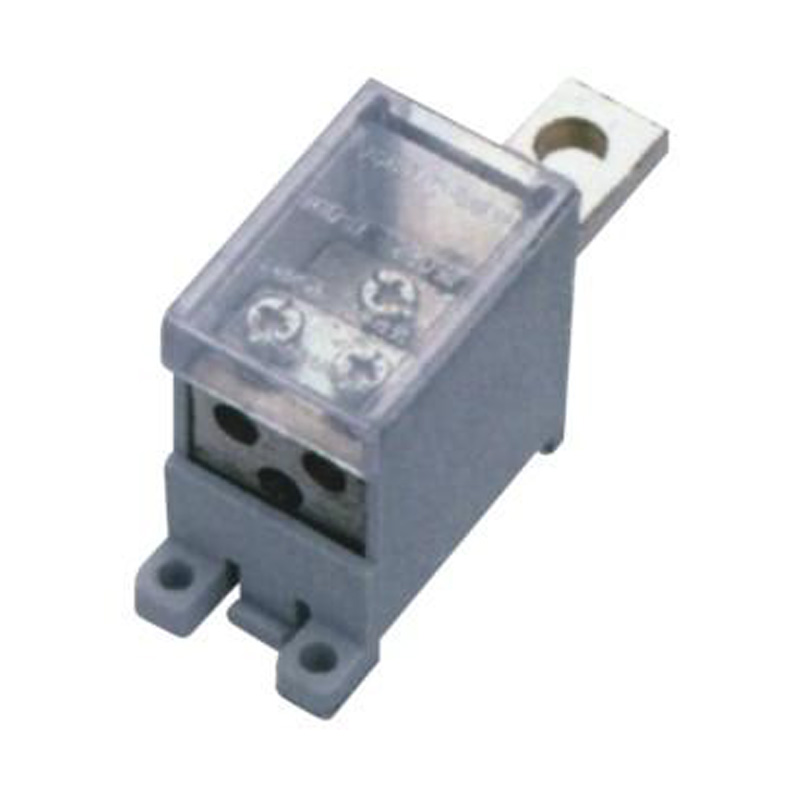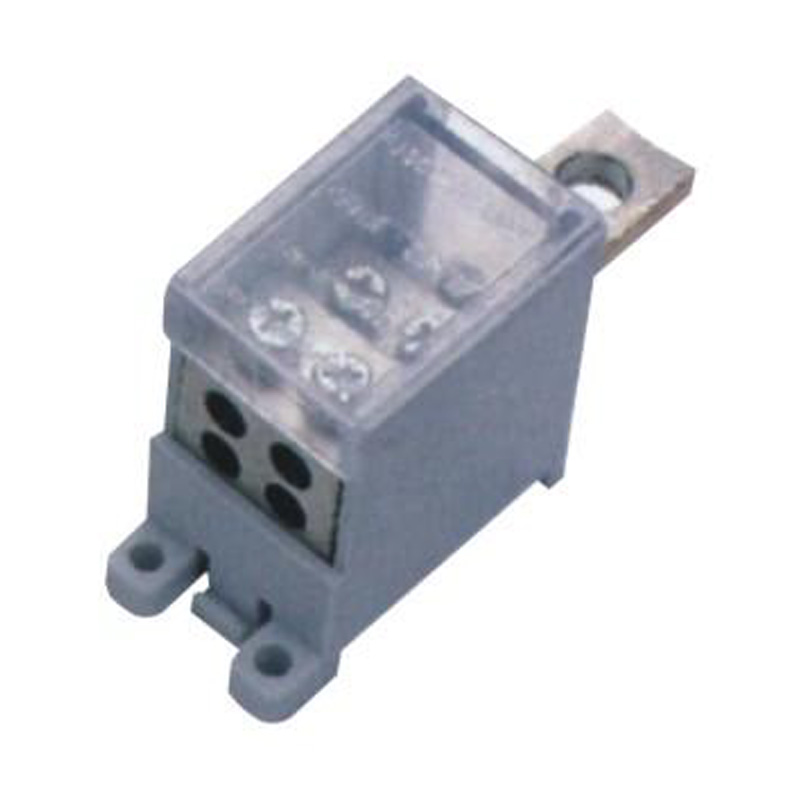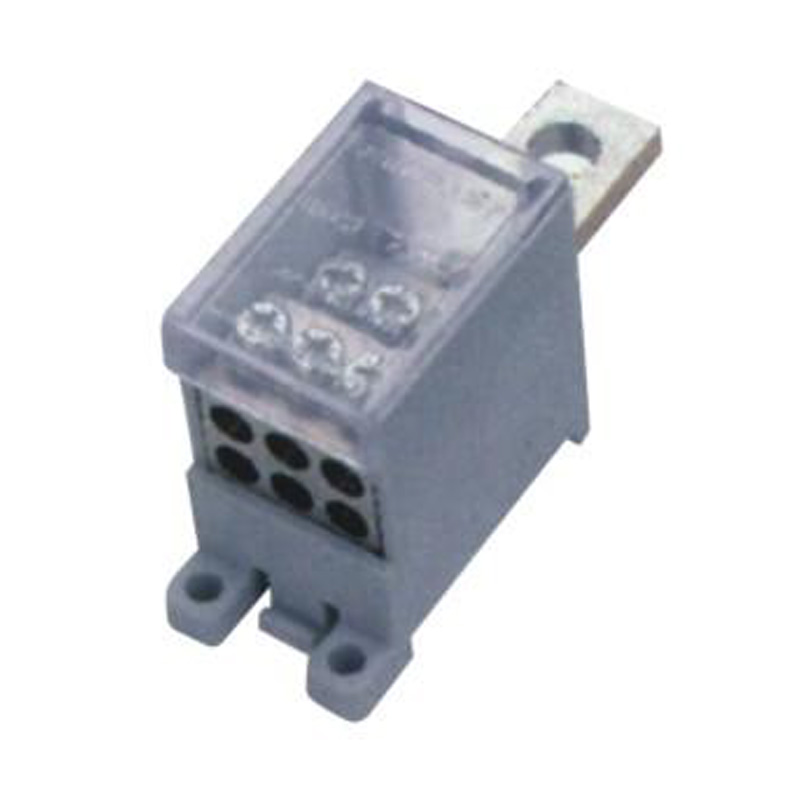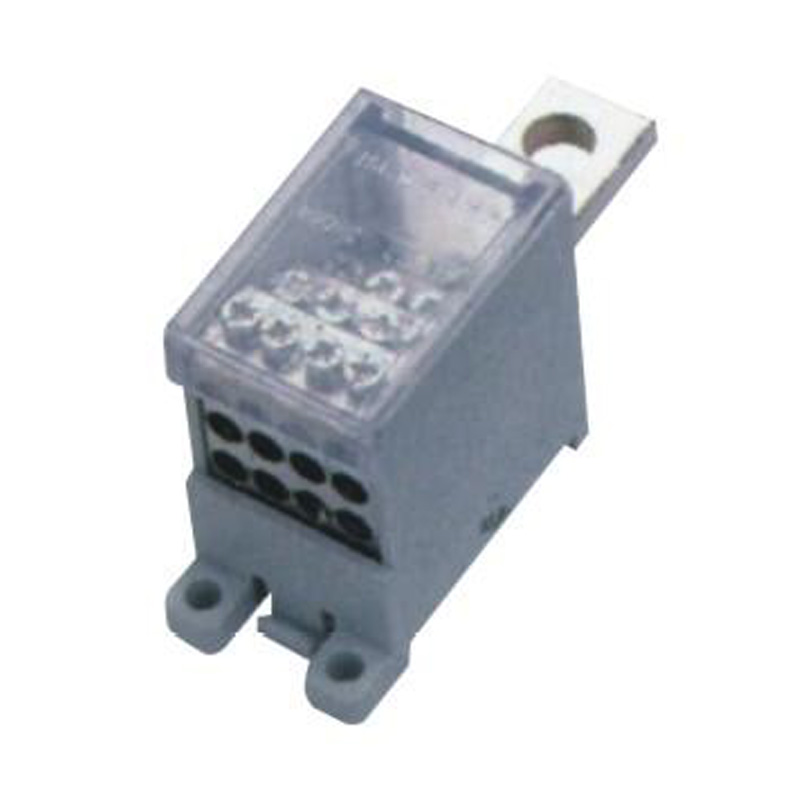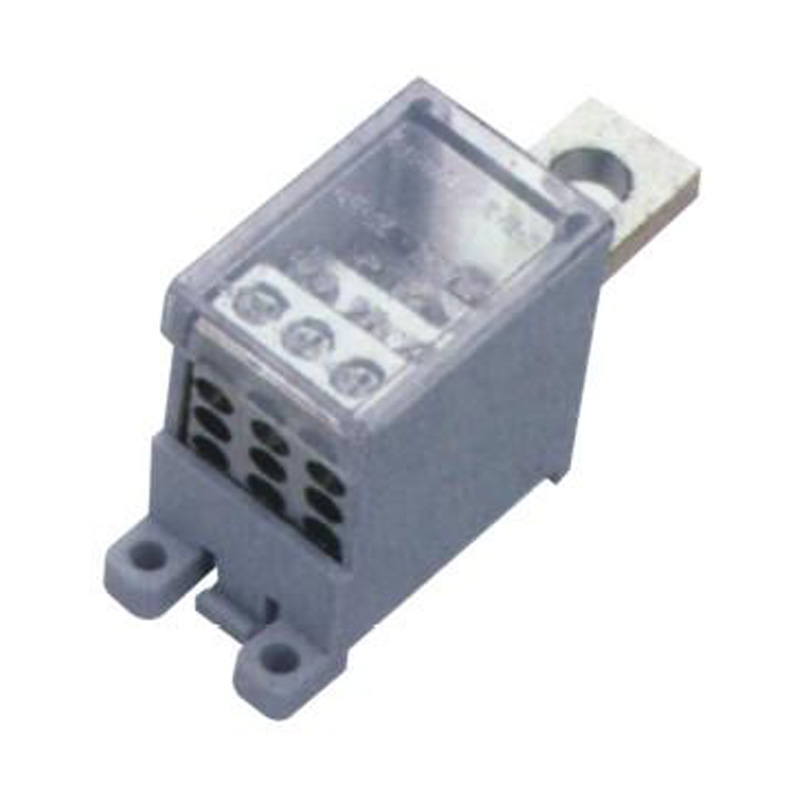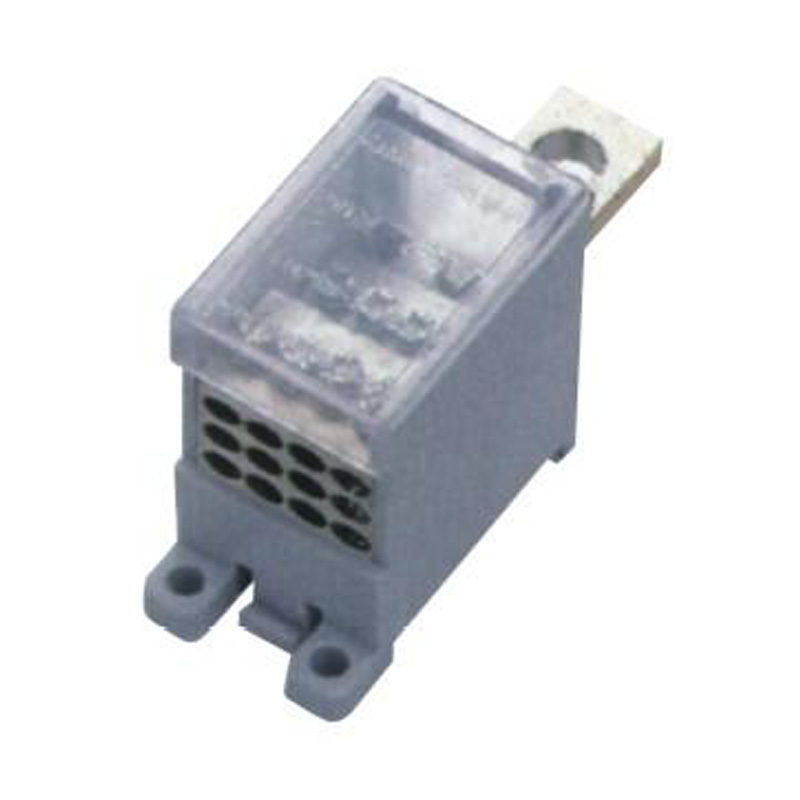In modern electrical control panels, a dual row terminal block combined with Din Rail Terminal Blocks provides an efficient soluti...
READ MORECombined Type Switch Terminal Block Manufacturer
Combined Type Switch Terminal Blocks are professionally used for creating versatile and reliable connections in electrical systems, specifically designed to integrate multiple functions into a single unit. These terminal blocks combine the functionality of electrical connections with integrated switching capabilities, making them ideal for use in control panels, distribution boards, and various electrical installations where space efficiency and multifunctionality are essential.
These terminal blocks feature a compact design that allows for secure connections of conductors while providing a built-in switch mechanism. This integrated design ensures easy management of electrical circuits, allowing users to control the flow of electricity with a single switch. The robust construction of Combined Type Switch Terminal Blocks ensures durability and reliability, even under continuous electrical load and varying environmental conditions.
Combined Type Switch Terminal Blocks are currently a versatile and reliable solution for managing electrical connections with integrated switching. They simplify the installation process by providing a compact and multifunctional unit, enhance system reliability through their robust design, and ensure consistent electrical performance. Their integrated design makes them suitable for a wide range of residential, commercial, and industrial applications where maintaining a stable and efficient connection is essential for safe and reliable operation.
FJ6G-100/10-35/2x25 Switch Terminal Block
FJ6G-100/10-35/2x 25
One-inlet, two-outlet
Inlet wire:10-35mm²,outlet wire:1.5-25mm²
Order number:150889
FJ6G-100/10-35/3x16 Switch Terminal Block
FJ6G-100/10-35/3x16
One-inlet, three-outlet
Inlet wire:10-35mm²,outlet wire:1.5-16mm²
Order number:150890
FJ6G-100/10-35/4x16 Switch Terminal Block
FJ6G-100/10-35/4x16
One-inlet,eight-outlet
Inlet wire:10-35mm²,outlet wire:1.5-16mm²
Order number:150891
FJ6G-100/10-35/6x16 Switch Terminal Block
FJ6G-100/10-35/6x16
One-inlet, eight-outlet
Inlet wire:10-35mm²,outlet wire:1.5-16mm²
Order number:150892
FJ6G-100/10-35/8x10 Switch Terminal Block
FJ6G-100/10-35/8x10
One-inlet,eight-outlet
Inlet wire:10-35mm²,outlet wire:1.5-10mm²
Order number:150893
FJ6G-100/10-35/9x16 Switch Terminal Block
FJ6G-100/10-35/9x16
One-inlet,nine-outet
Inlet wire:10-35mm²,outlet wire:1.5-16mm²
Order number:150894
FJ6G-100/10-35/12x10 Switch Terminal Block
FJ6G-100/10-35/12x10
One-inlet, eight-outlet
Inlet wire:10-35mm²,outlet wire:1.5-10mm²
Order number:150895
Search
Categories
-
Energy Measuring Terminal Block(314)
- Energy Measuring Joint Terminal Block(16)
- Polycarbonate Energy Measuring Terminal Block(24)
- Standard Wiring Energy Measuring Terminal Block(4)
- Transparent Shell Energy Measuring Terminal Block(6)
- Multifunctional Test Energy Measuring Terminal Block(10)
- Intelligent Safety Energy Measuring Terminal Block(6)
- Single-Phase Multi-Circuit Output Terminal Block(12)
- Self-Elevating Metering Box Terminal Block(7)
- One Household One-Meter Meter Box Dedicated Terminal Block(56)
- Three-Phase Metering Box Dedicated Terminal Block(24)
- Repeatable Grounding Line Terminal Block(20)
- Terminal Block for One-Inlet Multi-Outlet Metering Box(15)
- Closed Terminal Block(11)
- Heavy Current Terminal Block(48)
- Self-Boosting Terminal Block(5)
- Intelligent Self-Locking Terminal Block(3)
- Tool-Free Crimping Type Terminal Block(5)
- Wide Range of Wire Diameters Terminal Block(5)
- Combined Type Energy Measuring Terminal Block(37)
-
Switch Terminal Block(55)
- Pin-Type Incoming Line Switch Terminal Block(4)
- Multi-Way Connection Switch Terminal Block(4)
- Plug-pin Switch Terminal Block(7)
- Combined Type Switch Terminal Block(7)
- High Contact Cross Section Switch Terminal Block(7)
- Wide Range Switch Terminal Block(11)
- One Way in Switch Terminal Block(12)
- Equipped with Circuit Breaker Switch Terminal(3)
-
Heavy-current Terminal Block(631)
- Modular Building Block Terminal Block(156)
- Spherical Non-Destructive Crimp Terminal(120)
- Dual-Mode Connection Electrical Terminal(90)
- Anti-Electricity-Theft Terminal Block(74)
- Convenient Connection Terminal Block(12)
- High-Contact Section Terminal Block(12)
- Wide Range of Wire Diameters Neutral Line Terminal(9)
- Heavy-Current Neutral Line Terminal(9)
- Upper and Lower Rows of Neutral Terminal(2)
- Independent Neutral Line Terminal(7)
- Nose-Type Neutral Line Terminal(7)
- Rail Type Neutral Line Terminal(9)
- Fixed Neutral Line Terminal(12)
- Double Rail Assembly Electrical Terminal(19)
- Blue Jack-Up Terminal(6)
- Black Base Copper Bar Terminal(5)
- Compact Terminal Block(16)
- Precision Terminal Block(23)
- U-Shaped Harpoon Terminal(2)
- Grounding Metering Box Terminal Block(12)
- High-Performance Terminal Block(19)
- Multifunctional Terminal Block(10)
- Din Rail Terminal Block(76)
- Watt-hour Meter Connector(49)
-
Energy Meter Accessories(116)
-
-
As electrical systems become more advanced, the demand for more reliable, durable, and efficient components grows. Connectors Term...
READ MORE -
Ensuring that connector terminals are properly installed is critical for the long-term performance and reliability of any electric...
READ MORE -
Selecting the correct terminal is essential for the stability and efficiency of any electrical system. For professionals in the el...
READ MORE -
Electrical systems rely on high-quality components for safe, efficient, and reliable operation. One such crucial element is the co...
READ MORE -
Using the right junction box and circuit breaker block junction box can bring more than safety — it can significantly improve inst...
READ MORE
Do You Know About Combined-Type Switch Terminal Blocks?
A combined type switch terminal block is an integrated component that merges the standard function of a wiring terminal with the switching action of a electromechanical switch. This combination creates a more efficient and compact interface point within a control panel.
Function and Design Integration:
At its core, this device serves two primary purposes. It acts as a standard terminal block, providing a secure and reliable point to terminate and connect electrical wires, typically using a screw clamp or spring cage connection. Second, it incorporates a built-in switch mechanism, often activated by a lever or plunger. The electrical switching circuit is internally connected to the terminal points, creating a self-contained unit. This integrated design eliminates the need for separate components and the external wiring that would traditionally be required to connect a switch to a terminal, saving significant space on the DIN rail.
Space Saving and Wiring Reduction:
The immediate advantage is the drastic reduction in physical footprint and wiring complexity. Instead of mounting a terminal block and a separate switch and then running wires between them, a designer can specify a single combined unit. This approach can cut the required space in half and removes at least two wires and connection points from the system. This not only makes the panel more organized and less cluttered but also accelerates the installation process. Fewer connections also mean fewer potential points of failure, contributing to overall system reliability.
Common Applications:
These combined blocks are exceptionally useful in applications where a signal needs to be manually interrupted or monitored. A classic example is in a control system where a "maintenance off" or "manual override" function is required. The switch can be wired to cut power or send a signal to a PLC when activated. They are also used as "door switches" in control cabinets, where the act of opening the door activates the switch to cut power, enhancing safety for maintenance personnel. Their versatility makes them a valuable component for adding manual control points directly into a wired circuit.
What Are Micro Switch Terminals?
Micro switch terminals represent a specific and highly useful category of combined switch terminals. They integrate a precise, snap-action micro switch into a terminal block housing.
1. The Role of the Snap-Action Mechanism:
The defining feature of a micro switch is its quick, snap-action mechanism. This means the switch changes state abruptly at a specific point of actuator travel, regardless of the speed at which the actuator is moved. This provides clean, reliable, and bounce-free switching, which is crucial for sending accurate signals to digital controllers like PLCs. The terminal block housing provides the convenient wiring points, while the micro switch itself, often activated by a lever, roller, or push-button, provides the high-reliability switching action.
2. Signal Indication and Interface Control:
A primary application for micro switch terminals is in interface between manual actions and automated control systems. For instance, they are commonly used as position sensing terminals on the doors of control cabinets. When the door is opened, the switch actuator is released, changing its state and sending a "door open" signal to the safety circuit or PLC to initiate a controlled shutdown. They are also ideal for manual control stations on a panel, where an operator can flip a lever to change a state or trigger an action, with the resulting signal connected directly through the terminal for a simple and robust solution.
3. Enhancing Safety and Feedback:
The reliability of the micro switch mechanism makes these terminals well-suited for safety-related and feedback functions. Their consistent performance ensures that a limit is detected or a manual command is registered every time. This provides critical feedback to machine control systems about the state of guards, doors, and positioning, helping to prevent unsafe operations. By embedding this reliable sensing directly into the terminal strip, system designers gain a powerful tool for creating safer, more interactive, and more intelligent machines without complicating the panel layout.



 English
English Español
Español عربى
عربى